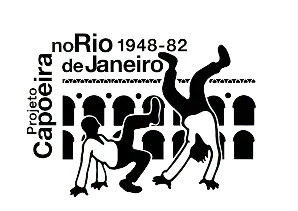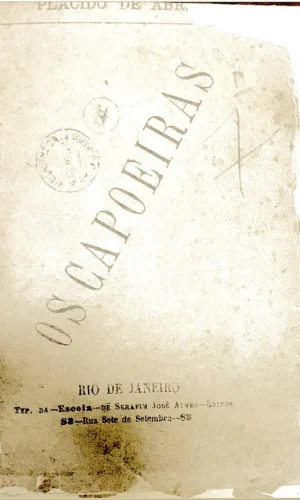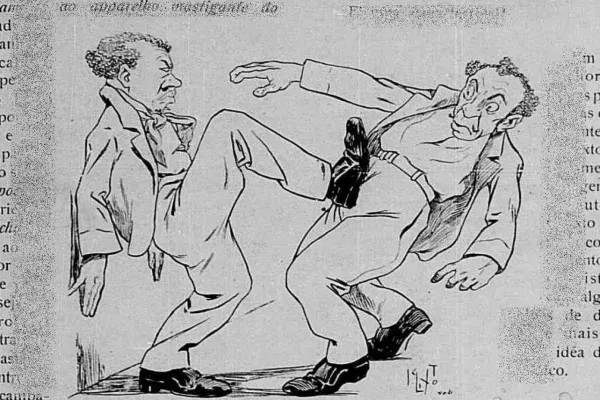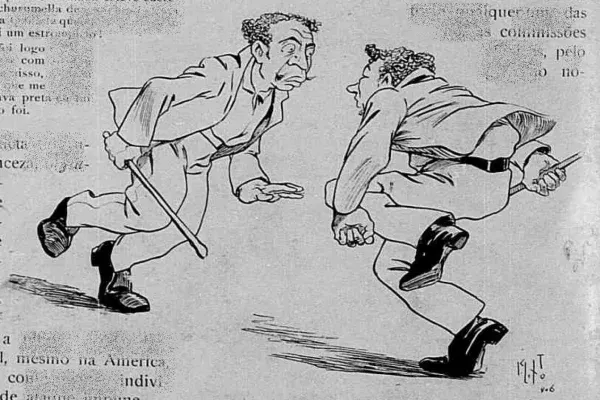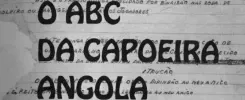The Portuguese writer and poet Plácido de Abreu published the novel Os capoeiras in 1886. Its introduction entitled “Two Words” represents a fundamental reference for the history of capoeira. Plácido was part of the world of capoeiragem in Rio de Janeiro, and this deep knowledge allowed him to describe the culture of the gangs (maltas) at the end of the Brazilian Empire.
Thanks to Mestre Itapoan (Raimundo César Alves de Almeida) for allowing the reproduction of the original transcription in Portuguese. Translation into English by Matthias Röhrig Assunção.
Two words
[1]
When I started this book, my aim was to describe the atrocities committed by capoeiras since ancient times. It is a difficult task to study capoeiragem, from its primitive times, because its origin is not well known.
Some attribute it to the African blacks, which I believe to be a mistake for the simple fact that in Africa we do not know capoeiragem, but only some headbutts
Nor can it be attributed to our Indians, because although they possess the lightness that characterises capoeiras, they do not know the means that these employ for attack or defence.
[2]
Often people mention the names Nagoas and Guaiamus, without knowing what they mean.
In order not to completely escape the idea I had when I started this book, I will give some information about these gangs, reserving all the secrets of capoeiragem for another book that will soon be published under the title Gaiamus and Nagoas.
Guaiamú is the capoeira that belongs to the following parties: Saint Francis (great centre, of which the famous Leandro Bonaparte was the chief), Saint Rita, Ouro Preto, Marinha, Saint Domingos de Gusmão, besides other small gangs aggregated to these.
The denomination these groups have is house or province and the colour they are known for is red.
Nagoa is the capoeira which belongs to the following parties: Saint Lucia (the centre which was led by Manduca da Praia), Saint Joseph, Lapa, Saint Anne, Moura, Bolinha de Prata [Little Silver Ball], besides other smaller groups affiliated to those parties. The colour they are known for is white.
Thus, when enemy capoeiras meet in a tavern, the Guaiamu asks for wine and brandy, pours the brandy on the ground and dances on top of it, finally pouring the wine over the brandy.
This is enough to start the fight, because the capoeira does not consent that his colour be stepped upon and much less that the colour of the adversaries be placed over it.
It is for this reason that many honest workers, who wear coloured bands, have been cut with jack-knives.
[3]
The parties are organised with a chief, an assistant, policemen and rank-and-file soldiers.
Not long ago, the Guaiamu gang used to rehearse their novices on the hill of Livramento, in a place called Mango Tree.
The rehearsals took place regularly on Sunday mornings and consisted of head and foot exercises and knife and razor blows.
The most famous capoeiras served as instructors for the newcomers. At first, the blows were rehearsed, making use of the clean hand; when the disciple took advantage of the lessons, they began to be rehearsed with wooden weapons and finally they made use of their very blades, and the place of the exercises often became bloody.
The Nagoas made the same rehearsals, with the difference that the place chosen by them was Russel beach, for the S. José and Lapa parties; and Pinto hill for Sant’ana.
When they went on a march, which is one party going to meet another to fight, a notice was always given to the opposite house, so that the gang would meet. At the occasion of the pegada (fight), it was customary to sing verses in a “toada sertaneja” style.
The Guaiamus sang:
Terezinha de Jesus
Open the door and tund off te light,
I want to see Nagoa die
At the door of Bom Jesus.”
The Nagoas answered:
The castle hosted a flag,
S. Francisco rang the bell,
Guaiamu’s complaining
Manoel Preto has arrived.”
In the March 1906 edition of Revista Kosmos, the designer K. Lixto didactically illustrate the movements of capoeira. Source: National Library.
[4]
This murder was done to discover the death that the no less celebrated Jorge-Marinha committed of a Nagoa, at rua dos Ourives.
By describing this murder, I will show the reader how much perversity is found in those vicious people who practice capoeiragem:
There was a party in the Church of Santa Rita. The Nagoas burst into the Guaiamus’ headquarters around one o’clock in the afternoon; they received them at knifepoint and, standing out among them, Jorge, chief of the Marinha gang, grabbed a Nagoa by the hair and thrice plunged the knife into his side, leaving him bloodied and face down on the pavement.
It is said among these perverse people that when a victim falls in that position, it is difficult for the murderer to escape justice. Jorge fled, but having been warned of that particularity by a companion, he turned back, grabbed the corpse again and for the last time buried the murderous iron in the body of his victim, disappearing afterwards.
The death of the Frenchman was followed by the death of Pinta Preta da Lapa on Alfândega Street, in front of the side street of S. Domingos, on the night of the King’s. After this, followed the death of the caboclo Jacó, in the celebration at Paula Matos, (being murdered in the street of Riachuelo), then came the death of the Alemãozinho [Small German], next to the old Lyrical Theatre do Campo, by the famous César-Maneta that, shortly after was also murdered on the Peixe Beach, by João-Lagalhé.
These reprisals have continued until today.
There must be evidence of the crimes to which we allude in the police archives.
For a perfect understanding of these gangs of thugs, I think it is convenient to point out some of the slang words they use among themselves:
Distorcer, disguise or remove for any reason.
Tapear, to deceive the adversary.
Tungar and balear, to wound the enemy.
Alfinete, biriba, biscate and furrão, stock or knife.
Sardinha [Sardine], razor.
Caçador [Hunter], a take-down that the capoeira gives, dragging himself on the ground on his hands and left foot and extending his right leg towards the adversary’s feet.
Moquete, sledgehammer, punch.
Banho de fumaça [Smoke bath], tumble, take down.
Alto da Sinagoga [High of the Synagogue], face.
Passo de constrangimento [Embarrassment step], hesitation of the enemy when he is knocked down or defeated; act of retreating with head bowed.
Passo de siricopé [Step of siricopé], a jump made by a capoeirista after he has made a negaça to wound.
Marcha [March], searching the adversary.
“Vou ver-te, cabra” [“I’ll see you, bastard”], threat to fight.
Carrapeta, a smart and audacious little fellow who roars in defiance of his enemies.
Bramar, to shout the name of the province or house to which the capoeira belongs.
Senhora da Cadeira [Lady of the Chair], Saint Anne.
Velho carpinteiro [Old carpenter], Saint Joseph.
Velho cansado [Old tired man], Saint Francis.
Senhora da palma [Lady of the palm], Saint Rita.
Espada, Lady of the Lapa.
Sarandeje, little capoeiras, miuçalha.
Endireitar [Straighten], confront with the enemy.
Mole [soft], coward.
“Leva, leva” [Take, take], shout of victory, chasing the enemy.
Chifrada [Horned], headbutt.
Encher [Stuffing], to give a blow.
Bracear, to hit with the arms.
Porre, drunkenness, binge.
Topete a cheirar [Smelling the quiff or top hair], headbutt.
“Não venhas, que sais do passinho mole”[“Don’t come, you’ll get out of the soft step]”, be prudent, because you’ll take a tumble.
Lamparina [Lamp], slap.
Branquinha [Little white one], brandy.
Está pronto [He’s ready], he’s wounded.
Foi baleado [He’s been shot]
“Quero estia, quero tasca, senão bramo” [“I want a stall, I want a tavern, or else I’ll roar,” I want part of this or that stolen, or else I’ll denounce it.
Deixa de saliências [Don’t be a braggart], don’t tell nonsense.
Rujão, battalion or society.
Roda [Wheel], let’s go
Jangada [Raft], police jail.
Palácio de Cristal [Crystal Palace], Detention.
Chácara [farm], house of correction.
Fortaleza [Fortress], chapel, tavern.
Dar sorte, [diversas aplicações] [To give good luck, [several usages)], to fall into ridicule or something well done.
É direito [It is right], it is fearless.
To know more:
Moura, Jair. Plácido de Abreu. Os Capoeiras (Epítome e Notas). Salvador: JM Gráfica Editora, 2019.
Soares, Carlos Eugênio Líbano. A negregada instituição. Os capoeiras no Rio de Janeiro. Rio de Janeiro: Prefeitura da Cidade do RJ, 1994.
Abreu, Plácido de. Os Capoeiras. Rio de Janeiro, Tipografia José Alves Editor, 1886.
The excerpt translated here corresponds to the introduction of the novel, transcribed by Jair Moura and originally published in Negaça. Boletim da Ginga-Associação de Capoeira, Salvador, year III, no. 3. November 13, 1995.
